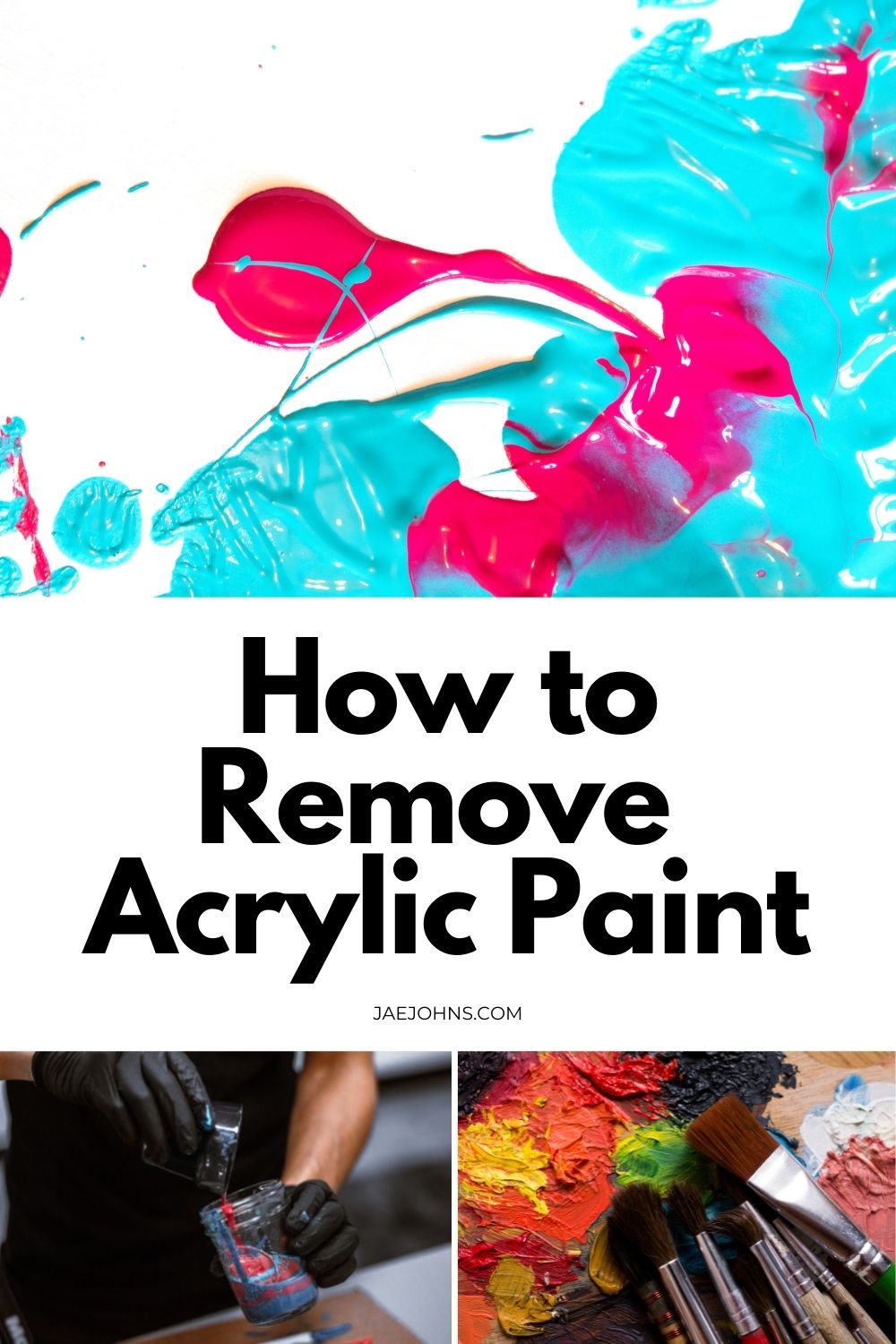Accidents happen, and when it comes to DIY projects, acrylic paint on walls is one of those pesky issues that can make you want to pull your hair out. But don’t freak out just yet! We’ve got your back, and in this article, we’ll spill the tea on how to get acrylic paint off a wall like a pro. Whether you’ve got a tiny splatter or a big blob, we’ve got solutions that’ll save your walls and your sanity.
You know that feeling when you’re in the middle of a painting project, and suddenly—bam!—a glob of acrylic paint lands on your wall where it’s not supposed to be. It’s like the universe is testing your patience. But hey, life’s all about learning, right? Lucky for you, we’ve rounded up the best techniques to tackle this problem without causing damage to your walls.
Now, let’s get real for a sec. Acrylic paint is tough stuff. Once it dries, it can feel like it’s permanently attached to your wall. But fear not, because we’ve got some game-changing tips and tricks that’ll help you remove acrylic paint like a boss. So, grab your favorite beverage, sit back, and let’s dive into this step-by-step guide.
Read also:Gypsy Rose Blanchard Boyfriends A Journey Through Her Complicated Relationships
Understanding Acrylic Paint and Its Challenges
Before we jump into the nitty-gritty of removing acrylic paint from walls, it’s important to understand what makes it so tricky to deal with. Acrylic paint is water-based, but once it dries, it forms a tough, durable film that can cling to surfaces like nobody’s business. This makes it a popular choice for artists and DIY enthusiasts, but it also means removing it requires a bit of elbow grease.
Here’s the deal: acrylic paint dries fast, and the longer it sits on your wall, the harder it is to remove. So, timing is everything. If you catch it early, you might be able to wipe it off with ease. But if it’s already dried, don’t worry—we’ve got your back with some powerful methods.
What You’ll Need to Get Acrylic Paint Off a Wall
Before you start scrubbing away, make sure you’ve got the right tools and materials. Here’s a quick list of what you’ll need:
- Warm water
- Mild dish soap
- Soft cloths or sponges
- Plastic scraper or credit card
- Paint thinner or rubbing alcohol (optional)
- Gloves to protect your hands
- Protective eyewear (if using strong chemicals)
Having these items on hand will make the process smoother and more effective. Plus, it’ll save you from running around the house trying to find stuff in the middle of the job.
Step-by-Step Guide: How to Remove Acrylic Paint from Walls
1. Act Fast: Remove Fresh Acrylic Paint
If you’re lucky enough to catch the paint while it’s still wet, your job will be a whole lot easier. Simply grab a soft cloth or sponge, dip it in warm water with a bit of mild dish soap, and gently wipe away the paint. This method works like a charm for fresh spills, so always keep an eye out for those pesky drips.
2. Scrape Off Dry Paint
For dried acrylic paint, you’ll need a bit more effort. Start by using a plastic scraper or even an old credit card to gently scrape off the paint. Be careful not to press too hard, as this could damage your wall. Work in small sections, and you’ll see the paint start to lift off.
Read also:Is Jack Griffo In A Relationship Letrsquos Dive Into The Love Life Of This Rising Star
3. Use Warm Water and Soap
After scraping, dampen a cloth with warm water and mild dish soap, and gently scrub the area. This will help dissolve any remaining paint residue. Rinse the cloth frequently to avoid smudging the paint around.
4. Try Rubbing Alcohol for Stubborn Spots
For those stubborn spots that won’t budge, rubbing alcohol can be your best friend. Dip a cotton ball or soft cloth in rubbing alcohol and gently rub the area. The alcohol will help break down the paint, making it easier to remove. Just be sure to test it on a small, inconspicuous area first to ensure it doesn’t damage your wall paint.
5. Paint Thinner as a Last Resort
If all else fails, you can use paint thinner to tackle the toughest acrylic paint stains. However, use this method with caution, as paint thinner can be harsh on both your walls and your skin. Always wear gloves and work in a well-ventilated area. Apply the paint thinner sparingly, and gently scrub the area with a soft cloth. Rinse thoroughly with water afterward.
Common Mistakes to Avoid
While removing acrylic paint from walls might seem straightforward, there are a few common mistakes that can make the job harder than it needs to be. Here’s what to avoid:
- Using abrasive tools or harsh chemicals that can damage your wall paint.
- Applying too much pressure while scraping, which can scratch or gouge the wall.
- Ignoring safety precautions when using strong chemicals like paint thinner.
By steering clear of these mistakes, you’ll ensure a smoother and more successful removal process.
Protecting Your Walls in the Future
Now that you’ve successfully removed the acrylic paint, let’s talk about how to prevent this from happening again. Here are a few tips to keep your walls paint-free during your next DIY project:
- Use painter’s tape to mask off areas you don’t want to paint.
- Lay down drop cloths to catch any accidental drips or splatters.
- Keep a damp cloth nearby to quickly wipe up any mistakes.
These simple precautions can save you a ton of time and effort in the long run. Trust us, your future self will thank you!
Dealing with Different Wall Surfaces
Not all walls are created equal, and the method you use to remove acrylic paint may vary depending on the type of wall surface you’re dealing with. Here’s a quick breakdown:
1. Painted Walls
For painted walls, stick to gentle methods like warm water and soap to avoid damaging the existing paint. If you need to use rubbing alcohol or paint thinner, test it on a small area first.
2. Textured Walls
Textured walls can be a bit trickier, as the paint can get lodged in the grooves. Use a toothbrush or soft-bristled brush to gently scrub the area, and follow up with warm water and soap.
3. Walls with Wallpaper
Removing acrylic paint from wallpaper requires extra care. Use a soft cloth and mild soap, and avoid using harsh chemicals that could damage the wallpaper.
Tips for Professional-Level Results
Want to take your wall paint removal game to the next level? Here are a few pro tips to help you achieve professional-level results:
- Work in small sections to maintain control and precision.
- Use a hairdryer to soften dried acrylic paint before scraping.
- Apply a layer of petroleum jelly to protect your wall paint while removing stubborn stains.
These tricks might sound simple, but they can make a world of difference when it comes to getting the job done right.
Conclusion: Say Goodbye to Acrylic Paint Stains
And there you have it, folks! With the right tools, techniques, and a bit of patience, you can remove acrylic paint from your walls like a pro. Remember, the key is to act fast and use gentle methods whenever possible. By following the steps outlined in this guide, you’ll be able to tackle even the toughest stains with confidence.
So, what are you waiting for? Get out there and save your walls from those pesky paint spills. And don’t forget to share this article with your fellow DIY enthusiasts. Together, we can all become wall paint removal experts!
Table of Contents
- Understanding Acrylic Paint and Its Challenges
- What You’ll Need to Get Acrylic Paint Off a Wall
- Step-by-Step Guide: How to Remove Acrylic Paint from Walls
- Common Mistakes to Avoid
- Protecting Your Walls in the Future
- Dealing with Different Wall Surfaces
- Tips for Professional-Level Results
- Conclusion: Say Goodbye to Acrylic Paint Stains
Now go forth and conquer those paint stains like the DIY warrior you are!


